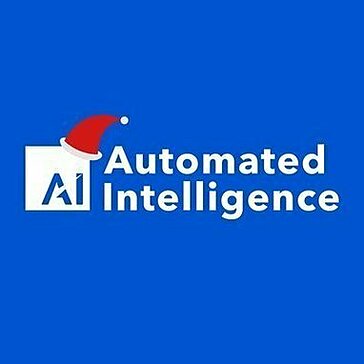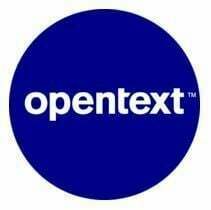4.25
OpenText Structured Data Manager Review
Discover our OpenText Structured Data Manager review. Learn about features, security, pricing, support, and overall value for money. See if it meets your data needs!
Comprehensive overview and target audience
Comprehensive overview of OpenText Structured Data Manager and target audience
OpenText Structured Data Manager provides a robust framework for managing enterprise application data throughout its lifecycle. It specializes in handling structured data typically found in databases supporting critical business applications often legacy systems. The primary goal is to help organizations reduce IT complexity and costs associated with maintaining outdated applications while ensuring data compliance and accessibility for reporting or analysis.
The target audience primarily consists of large enterprises facing challenges with sprawling application portfolios. This includes organizations in highly regulated industries such as financial services, healthcare, insurance, and energy where data retention policies and compliance mandates are stringent. IT departments specifically database administrators, application portfolio managers, and compliance officers find significant utility in its capabilities. Any business looking to retire legacy applications safely without losing historical data or needing to meet complex data privacy regulations like GDPR or CCPA should consider this solution. Its ability to archive, manage, and provide controlled access to historical data is paramount.
Key functionalities revolve around application retirement, data archiving, and data privacy. The platform enables subsetting, masking, and archiving data from diverse sources into a secure, consolidated repository. Strong OpenText Structured Data Manager security features are integral; these include role based access controls, data encryption both in transit and at rest, and sophisticated data masking techniques to protect sensitive information during non production use or analysis. This ensures compliance and mitigates risks associated with data breaches.
Evaluating the OpenText Structured Data Manager value for money requires considering the significant cost savings derived from decommissioning legacy hardware and software, reduced maintenance overhead, and lower compliance costs. While a direct OpenText Structured Data Manager pricing comparison needs specific quotes based on deployment size and modules, its potential return on investment is compelling for organizations managing extensive application landscapes. Continuous improvement is evident through regular OpenText Structured Data Manager updates and new features, enhancing performance, expanding connectivity options, and addressing evolving security threats and compliance needs. Furthermore, comprehensive OpenText Structured Data Manager support and training resources, including documentation, knowledge bases, and professional services, are available to ensure successful implementation and ongoing operation, helping users maximize their investment.
User experience and functional capabilities
Delving into the OpenText Structured Data Manager user experience insights reveals a platform designed with technical proficiency in mind. While perhaps not boasting the visual simplicity of some modern consumer facing applications, its interface is functional and provides administrators with granular control over complex data management tasks. The user experience prioritizes capability over cosmetic flair, catering effectively to database administrators, compliance officers, and IT managers who require deep access to configuration settings and workflow management tools. Navigation can initially seem complex due to the breadth of features, but logical grouping of functions helps users familiarise themselves over time.
Understanding how to use OpenText Structured Data Manager involves mastering its core workflows. Key processes typically include: defining connections to source and target databases; creating data models for the information being archived; configuring business rules for data subsetting, masking, and retention; and scheduling or executing archiving jobs. The platform provides wizards and configuration screens to guide these steps, though a solid understanding of database structures and data management principles is essential for effective operation. Training resources and documentation are crucial for users to leverage the full spectrum of capabilities efficiently.
Implementation is a significant undertaking, often detailed in an OpenText Structured Data Manager implementation guide. It requires careful planning, thorough data discovery, and often professional services engagement due to the complexity of integrating with diverse legacy systems and defining precise archiving policies. Common problems with OpenText Structured Data Manager can arise during this phase, including challenges in connecting to obscure or highly customized legacy applications, performance tuning for very large databases, and accurately mapping complex data relationships. Proper initial setup and ongoing configuration management are vital to avoid operational hiccups.
Functionally, the software excels in its core mission: secure data archiving and application retirement. Its ability to extract, transform, and load structured data from myriad sources into a compressed, secure archive is a key strength. Robust data masking and subsetting capabilities ensure that sensitive information is protected when used in non production environments or accessed for analytics, supporting compliance with regulations like GDPR. The platform provides comprehensive audit trails and role based access controls, reinforcing data governance and security postures critical for regulated industries.
Furthermore, integrating OpenText Structured Data Manager with other tools enhances its value. It can feed archived data into reporting and analytics platforms, providing access to historical trends without maintaining the original application. Integration with other OpenText solutions like InfoArchive or ApplicationXtender can create a more holistic information governance ecosystem. The commitment to improvement is demonstrated through regular OpenText Structured Data Manager updates and new features, which often include expanded database support, enhanced security protocols, performance optimizations, and refined user interface elements based on feedback.
Ultimately, achieving success hinges on adopting best practices for deployment and management. This includes thorough initial planning and scope definition, establishing clear data retention and masking policies, conducting pilot projects, and ensuring adequate user training. Following these guidelines helps organizations maximize the return on investment, mitigate risks effectively, and truly harness the power of structured data management for long term benefit.
Who should be using OpenText Structured Data Manager
OpenText Structured Data Manager is primarily designed for large enterprises grappling with complex IT landscapes and significant volumes of structured data, often spread across numerous legacy applications. Organizations operating within highly regulated industries such as financial services, healthcare, insurance, and energy will find its capabilities particularly pertinent due to stringent data retention and compliance requirements.
Specifically, the solution caters to key personnel within these organizations. IT leaders seeking to reduce infrastructure costs and complexity associated with maintaining outdated systems are prime candidates. Database administrators responsible for managing and safeguarding enterprise data find its archiving and security features invaluable. Compliance officers tasked with ensuring adherence to regulations like GDPR or CCPA benefit from its robust data masking, subsetting, and auditing capabilities. Application portfolio managers aiming to streamline the application landscape by decommissioning legacy systems without losing critical historical information should also consider this platform.
A common OpenText Structured Data Manager use case scenario involves archiving data from a decommissioned enterprise resource planning system to lower maintenance costs while retaining access for future audits or reporting needs. Another typical scenario is creating secure, masked subsets of production databases for development and testing environments, protecting sensitive information. Essentially, any organization facing challenges with legacy system data retention, application retirement projects, data privacy compliance, or managing the costs of ever growing databases is a suitable user.
The platform is best suited for organizations that recognize the strategic importance of managing their structured data lifecycle effectively. Companies ready to invest in a structured approach to data archiving and willing to adhere to best practices for OpenText Structured Data Manager implementation, such as detailed planning and policy definition, will realize the most significant benefits in terms of cost savings, risk mitigation, and enhanced data governance.
Unique Features offered by OpenText Structured Data Manager
OpenText Structured Data Manager offers significant flexibility through its customization options and boasts unique features tailored for complex enterprise environments. The platform allows extensive configuration to meet specific organizational requirements for data archiving, application retirement, and compliance. Users can define granular rules for data subsetting, ensuring only relevant information is archived or provisioned to non production environments. Data masking policies are highly customizable, enabling organizations to protect sensitive information according to internal standards and external regulations like GDPR.
Key customization points include:
Defining detailed data retention policies based on data type, age, or regulatory mandates.
Configuring intricate business rules to maintain data integrity and relationships during the archiving process.
Tailoring security settings with role based access controls and specific user permissions.
Adapting data extraction processes to connect with a wide array of legacy databases and application interfaces.
This level of control is crucial when customizing OpenText Structured Data Manager for business growth, as it allows the solution to evolve alongside changing IT landscapes and compliance demands. Unique features center on its robust ability to handle heterogeneous structured data sources, from common SQL databases to older, more obscure systems often found in large enterprises. Its specialized focus on application decommissioning provides a structured pathway for retiring legacy applications safely and cost effectively.
Furthermore, integrating OpenText Structured Data Manager with other tools significantly enhances its utility. It can seamlessly feed archived data into business intelligence platforms for historical reporting or connect with other OpenText solutions like InfoArchive to create a unified information governance ecosystem. While its comprehensive nature positions it primarily for large scale operations, the potential use of OpenText Structured Data Manager for small businesses is less typical due to the complexity and investment usually involved. Small businesses would need very specific, high value legacy data challenges to justify such a powerful platform.
Pain points that OpenText Structured Data Manager will help you solve
Organizations managing complex IT environments face challenges that hinder efficiency, inflate costs, and introduce significant risks. OpenText Structured Data Manager directly addresses these critical pain points, offering a strategic solution for enterprise application data management.
Consider these key problems the platform helps overcome:
High costs of maintaining legacy applications: Outdated systems drain IT budgets through hardware, software licenses, and specialized support. Structured Data Manager facilitates secure application retirement by archiving essential data, significantly reducing operational expenditures and freeing up resources for innovation.
Complex compliance and data privacy burdens: Adhering to GDPR, CCPA, and industry data retention rules is challenging. The platform mitigates compliance risks via secure, policy based archiving, strong access controls, defensible audit trails, and sophisticated data masking to protect sensitive information consistently.
Inaccessible historical data silos: Valuable business insights and audit information often remain trapped in retired or disparate systems. Structured Data Manager consolidates this data into a secure, accessible archive, making it available for reporting, analytics, and compliance without the original application.
IT complexity from application sprawl: Managing numerous aging applications strains resources and slows digital transformation. By enabling controlled application decommissioning, the solution simplifies the IT landscape, enhances agility, and focuses resources strategically.
Risks during application decommissioning: Retiring applications improperly risks data loss, compromises integrity, or violates retention obligations. Structured Data Manager provides a reliable process for extracting, validating, and archiving data, ensuring safe and compliant retirement.
Securing data in non production environments: Using production data copies for development or testing exposes sensitive information. The platform’s data subsetting and masking create realistic yet secure data sets, minimizing breach risks effectively.
Slow responses to audit and eDiscovery: Searching for historical records across multiple systems is inefficient. A centralized archive managed by Structured Data Manager enables faster, more cost effective data retrieval when needed.
Adapting to future needs: Customizing OpenText Structured Data Manager for business growth ensures it evolves with changing requirements. While OpenText Structured Data Manager for different businesses sizes leans towards large enterprises, its core value addresses complex legacy data scenarios wherever they exist. Integrating OpenText Structured Data Manager with other tools like BI platforms further maximizes its utility and supports strategic goals.
Scalability for business growth
OpenText Structured Data Manager is fundamentally designed to support organizations as they expand. Business growth inevitably leads to increased data volumes, more complex application landscapes, and evolving regulatory demands. The platform’s architecture anticipates this, providing a robust foundation capable of handling the escalating scale of enterprise information management needs. Its ability to manage and archive structured data from a growing portfolio of applications, both legacy and potentially newer systems needing consolidation later, ensures that IT infrastructure does not become a bottleneck to expansion. By efficiently archiving historical data from costly legacy systems, it frees up valuable production system resources and significant budget. This allows critical investments to be directed towards innovation and growth initiatives rather than maintaining burdensome, outdated environments, directly fueling business development potential.
The adaptability of the platform is crucial for sustained expansion. Customizing OpenText Structured Data Manager for business growth allows organizations to meticulously tailor archiving strategies, data retention policies, and security access controls as their operational footprint widens, new applications are onboarded, or they enter new markets with different compliance requirements. This ensures that data management practices remain effective, secure, and compliant throughout the entire growth journey. Furthermore, Customizing OpenText Structured Data Manager for business scalability means the system architecture and processing capabilities can be configured to handle significantly larger datasets and increased processing frequencies without sacrificing performance. Its proven capacity to manage terabytes of historical data efficiently ensures that access for analytics, audits, or eDiscovery remains timely and reliable even as the central archive grows substantially over many years. This inherent scalability provides confidence that the solution will continue to meet performance expectations and support strategic decision making long term, underpinning sustainable and well managed business development.
Final Verdict about OpenText Structured Data Manager
Our analysis leads us to a conclusive assessment of this powerful platform. OpenText Structured Data Manager emerges as a highly specialized and robust solution designed explicitly for the complex challenges of managing legacy application data within large enterprises. Its core strength lies in facilitating secure application decommissioning and consolidating vast amounts of structured historical data. This process directly addresses significant pain points: primarily the high operational costs associated with maintaining outdated systems and the critical need for stringent compliance adherence in regulated industries.
The platform successfully enables organizations to retire legacy applications while preserving access to vital historical information for audits, analytics, or regulatory requirements. Key features include:
Effective data archiving capabilities.
Comprehensive data masking and subsetting options for security.
Policy driven retention management for compliance.
These functionalities mitigate risks associated with data privacy regulations like GDPR and ensure data integrity throughout its lifecycle. The solution demonstrates considerable scalability, capable of handling terabyte scale archives and adapting to business growth through extensive customization options. This ensures long term viability as organizational needs evolve.
However, potential adopters must recognize that harnessing its full potential requires significant technical expertise and careful planning. The user experience prioritizes deep functionality over superficial simplicity, reflecting its target audience of experienced IT professionals, database administrators, and compliance officers. Implementation can be complex, often necessitating professional services due to the intricacies of connecting with diverse legacy systems and defining precise data management rules. It is not typically suited for smaller businesses lacking the specific large scale legacy data challenges it addresses.
Ultimately, our **Final verdict on OpenText Structured Data Manager** is positive for its intended market. For large organizations struggling with application sprawl, legacy system costs, and complex compliance demands related to structured data, it offers a compelling value proposition. It provides a structured, secure, and scalable method to manage the end of life for critical applications, reduce IT complexity, ensure compliance, and maintain access to historical data, making it a strategic investment for effective information governance.
Advantage
Disadvantage
Reduce infrastructure costs via data archiving
Ensure regulatory compliance for structured data
Improve production application performance significantly
Maintain seamless access to historical application data
Mitigate risks during application retirement projects
Disadvantage
Complex implementation and configuration
Potentially high total cost of ownership
Requires specialized technical expertise
Steep learning curve for administrators
Integration can require significant effort
Rating
Product Support
Web Based
Windows
Mac OS
Linux
Android
iOS
Phone Support
Email/Help Desk
AI Chat Bot
Live Support
24/7 Support
Forum & Community
Knowledge Base
Live Online
Documentation
Videos
In Person
Webinars
Company: OpenText
Email: Not Available
Address:
275 Frank Tompa Drive, Waterloo, Ontario N2L 0A1, CanadaPhone: +1-519-888-7111
Implementation
Web Based
Windows
Mac OS
Linux
Android
iOS
Support
Phone Support
Email/Help Desk
AI Chat Bot
Live Support
24/7 Support
Forum & Community
Knowledge Base
Training
Live Online
Documentation
Videos
In Person
Webinars
Group text
Company: OpenText
Email: Not Available
Address:
275 Frank Tompa Drive, Waterloo, Ontario N2L 0A1, Canada
Phone: +1-519-888-7111
Alternative Products
Frequently Asked Questions
What core problem does OpenText Structured Data Manager solve?
OpenText Structured Data Manager addresses the significant challenge of managing large volumes of structured data trapped within legacy or inactive applications, which often drives up IT costs, increases security risks, and complicates regulatory compliance.
How can OpenText Structured Data Manager help me?
It helps your organization significantly reduce infrastructure and maintenance costs by retiring redundant applications, ensures long-term compliance by securely archiving data with enforceable retention policies, minimizes security risks associated with unsupported legacy systems, and provides controlled access to historical data for reporting, audits, and business continuity.
What are the main features and capabilities?
Key features include comprehensive data archiving from various databases and applications, controlled application retirement and decommissioning workflows, data subsetting and masking capabilities for non-production environments, secure, compressed long-term data storage (often leveraging OpenText InfoArchive), robust search and reporting access to archived information, and policy-based data retention and legal hold management.
Who is the target user for this software?
The target users are typically large enterprises and organizations within regulated industries (like financial services, healthcare, energy, public sector) that possess numerous legacy applications, complex IT landscapes, and stringent data governance, compliance, and retention requirements. IT managers, compliance officers, and data architects are key stakeholders.
How does it handle data archiving and application retirement?
It handles data archiving by intelligently extracting structured data (and potentially related unstructured content) from source systems, transforming it into an application-independent format, and ingesting it into a secure, optimized archive (like OpenText InfoArchive). For application retirement, it ensures all necessary data is captured and validated before facilitating the safe decommissioning of the original application infrastructure, while maintaining ongoing access to the archived data.
What are the key integration points or supported systems?
SDM boasts strong integration capabilities with a wide array of enterprise systems, including major relational databases (Oracle, SQL Server, DB2, etc.), ERP platforms (SAP S/4HANA, SAP ECC, Oracle E-Business Suite, PeopleSoft), CRM systems, mainframes, and various custom-built applications. It often integrates tightly with other OpenText solutions, particularly OpenText InfoArchive for the storage layer.
What are the potential challenges or limitations noted in the review?
Potential challenges can include the initial complexity of configuration and mapping diverse legacy systems, the potential cost associated with licensing and implementation services (especially for large, complex environments), the need for specialized skills or vendor support for setup and maintenance, and the requirement for thorough planning and testing to ensure data integrity during migration and retirement processes. Performance during large-scale extractions might also need careful management.
Is OpenText Structured Data Manager worth it based on its performance and cost?
For organizations struggling with the high costs and risks of maintaining numerous legacy applications and needing to meet strict compliance mandates for data retention and access, OpenText Structured Data Manager generally represents a worthwhile investment. While the upfront cost and implementation effort can be significant, the long-term ROI through reduced infrastructure spending, mitigated compliance risks, and streamlined data access often justifies the expenditure, especially when compared to the ongoing costs and potential penalties of inaction.






